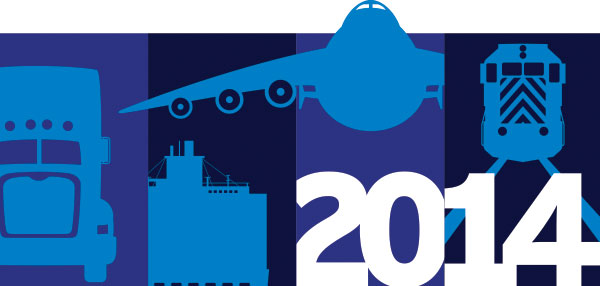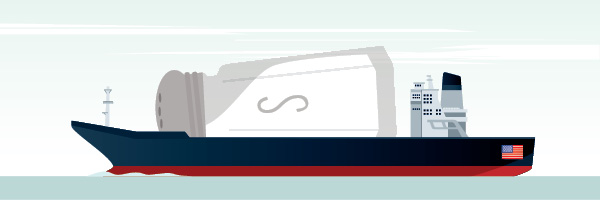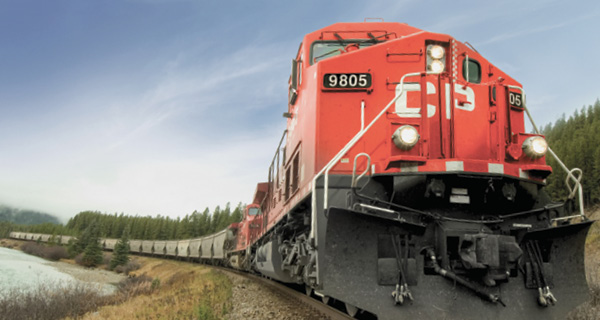Articles
Public Policy

Are You Ready to ACE It?
On Feb. 19, 2014, President Obama signed an Executive Order intended to streamline the export/import process. It establishes December 2016 as the completion date for the International Trade Data System (ITDS), which will allow businesses to transmit, through an electronic "single-window," all the data required to import or export goods. The Automated Commercial Environment (ACE) […]
Read More
Trends—July 2014
The 25th Annual State of Logistics Report: Ready For a New Route After a rollercoaster year for the economy and the transportation sector, the Council of Supply Chain Management Professionals and Penske Logistics released their 25th annual State of Logistics report. Aptly titled Ready For a New Route, the report focuses on 2013’s weak economy, […]
Read More
10 Steps to Import Compliance
Ever-changing import rules enforced by U.S. Customs and Border Protection (CBP) require companies to remain current on regulations and process methodologies—or risk delays and noncompliance fines. Organizations that fail to comply with current customs rules—even in ignorance—can be designated as high risk, and subject to more frequent inspections and longer processing times in the future. […]
Read More
Could New Fuel Efficiency Standards Lead to Transportation Cost Savings?
In February 2014, the Obama administration outlined plans for improving fuel efficiency and reducing greenhouse gas emissions for American trucks. To support this effort, the Environmental Protection Agency and U.S. Department of Transportation must set new standards for medium- and heavy-duty vehicles. The rules, which the agencies must issue by March 2016, will have ripple […]
Read More
Why Every Manufacturer Needs a Reverse Logistics Solution
The average manufacturer spends nine to 14 percent of total sales on product returns each year, according to an Aberdeen Group study. Yet an estimated 45 percent of manufacturers do not have a reverse logistics solution. They rely on retail or wholesale partners to deal with customer returns, recalls, and seasonal overstocks. Until the mid-1990s, […]
Read More
U.S.-Canada Trade: Getting a Line on Cross-Border Shipments
To efficiently move goods across the U.S.-Canada border, shippers and logistics providers must adapt to regulatory, geographic, and currency challenges.
Read More
What Midmarket Companies Need to Know About Trade Compliance
Q: What is the status of midmarket companies in the global trade arena? A: Global trade has become increasingly attractive to the midmarket—defined as companies with revenues between $5 million and $1 billion—because of lower sourcing and production costs in some developing countries, as well as rising consumption in some overseas markets. Between 2012 and […]
Read More
Preparing for New Trade Regulations
Major trade regulation changes are affecting the global supply chain, unprecedented in both number and magnitude. Although the changes impact some industries more than others, every company that imports into, or exports from, the United States or Canada will be affected. The majority of the regulations require new licensing, while others mandate significant software updates. […]
Read More
Efficient and Compliant Hazmat Shipping: Today You Can Have Both
Q: What are the common hazmat violations, and what are the consequences for shippers and carriers? A: In the United States, both the Department of Transportation (DOT) and the Federal Aviation Administration (FAA) regulate hazardous material (or dangerous goods) transportation. Penalties can range from a few thousand dollars to more than one million dollars, and […]
Read More
Trends—March 2014
Is the Jones Act Worth its Salt? A briny tale about a man named Jones, complete with international intrigue, American protectionism, twisted truths, and misplaced blame unfolded recently when a 40,000-ton shipment of road salt bound for New Jersey got waylaid in Searsport, Maine. The man in question is Wesley Jones, the U.S. senator from […]
Read More
Trends—February 2014
Canadian Pacific: All Aboard the Profit Train Canadian Pacific Railway‘s renaissance under the tutelage of CEO Hunter Harrison continues unabated. After the veteran railroader’s first full year in charge, the Calgary, Alberta-based railroad posted high-water marks in 2013—despite disruptive spring floods . Canadian Pacific reported total record revenue of $6.1 billion in 2013, with net […]
Read More
Cargo Security: Protecting the Supply Chain
Whether on a truck, in a warehouse, or at a port, your shipments are vulnerable to theft. Learn how to reduce that risk and keep your valuable cargo safe.
Read More
Rail Trends Recap: Shared Strategies, Mixed Signals
From growing pains to safety to regulation, the rail industry will cross many challenges in the year ahead, and they all affect shippers. Inbound Logistics brings you aboard with Rail Trends conference coverage.
Read More
Transportation Planning – A Manual Headache Or an Optimized Dream
Fluctuating fuel prices, Hours of Service rules, and other factors make optimized routing and scheduling vital.
Read More
Know Thy Partner: Beyond C-TPAT
The globalization of supply chains has caused a major shift in trade partnerships. Partners are changing more rapidly than in years past. Relationships tend to be more focused on who can supply products cheaper, faster, at better quality, and U.S. companies are looking worldwide for competitive parts’ sources. With this new globally spread supply chain […]
Read More
Trends—January 2014
Getting Demand Forecasting in Hand In the demand-driven logistics domain, forecasting is king. Companies that are best able to predict sputters and spikes, then react and execute against those signals, will gain a competitive advantage. But given today’s market uncertainty—the economy, consumer purchasing power and appetite for new products, sliding holiday seasonality, and emerging omni-channel […]
Read More
Global Logistics—January 2014
Supplier Risk Threatens Expansion Nearly seven out of 10 business leaders believe supplier risk analysis will become more complex as they expand into new global markets, according to the Economist Intelligence Unit report Strategies for Managing Customer and Supplier Risks, sponsored by Dun & Bradstreet. Adverse events associated with suppliers are becoming more frequent and […]
Read More
How to Manage Hours-of-Service Regulations Compliance
Now that the Federal Motor Carrier Safety Administration’s Hours-of-Service (HOS) rules have entered into force, trucking companies and shippers need to account for these regulatory changes. Any company that is working in a fast-paced, time-definite shipping environment is especially vulnerable. The new HOS regulations feature two key provisions: Limitations on minimum “34-hour restarts.” Where previously […]
Read More
Global Logistics—November 2013
Aviation Climate Emissions Agreement Flies Forward The October 2013 agreement by 191 countries at the International Civil Aviation Organization (ICAO) general assembly in Montreal, which will develop a global market-based measure for aviation emissions by 2020, is a major breakthrough in the development of global standards for the industry. Under terms of the resolution, governments […]
Read More
How Will the Affordable Care Act Impact Shippers?
Companies large and small are assessing the impact the Patient Protection and Affordable Care Act (PPACA) will have on employee benefits. The mandates of the act start Jan. 1, 2014, and employers are examining a variety of responses. Shippers must not only face the question of how this legislation relates to their own operations and […]
Read More